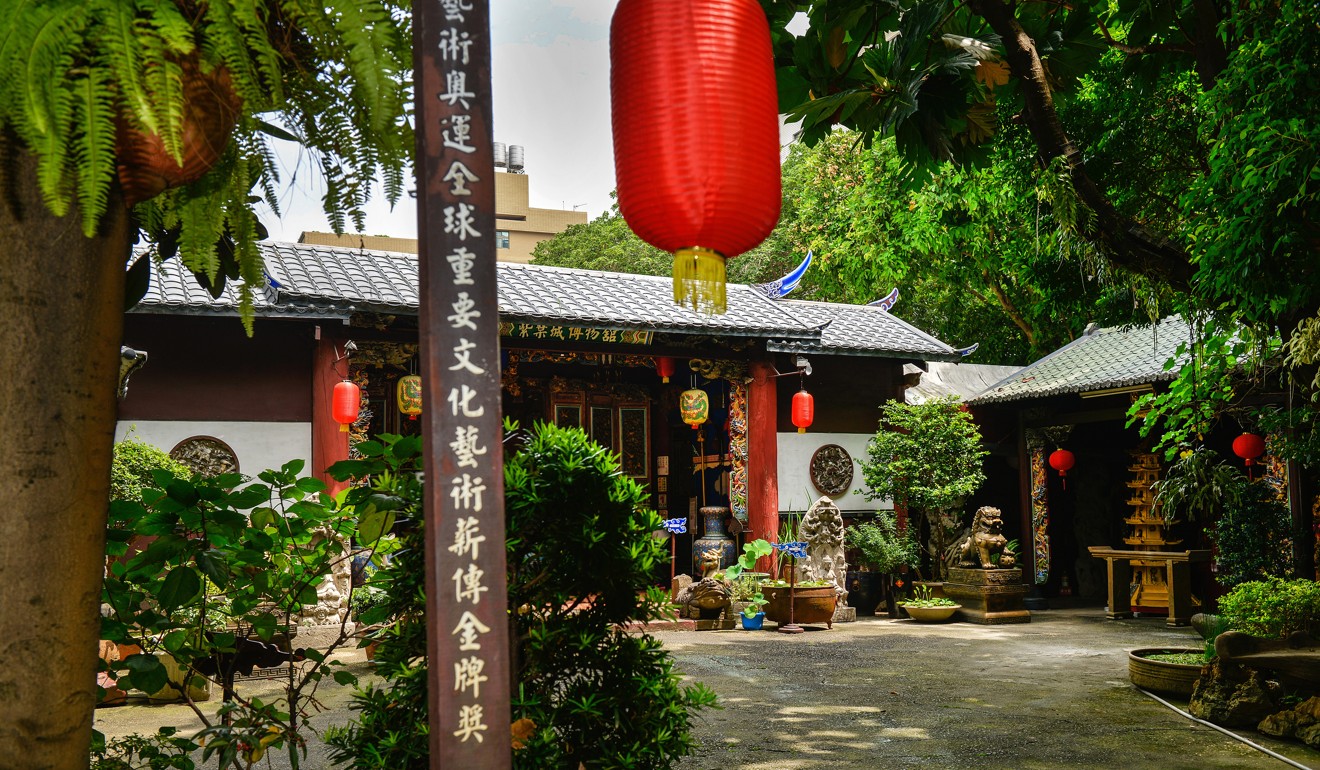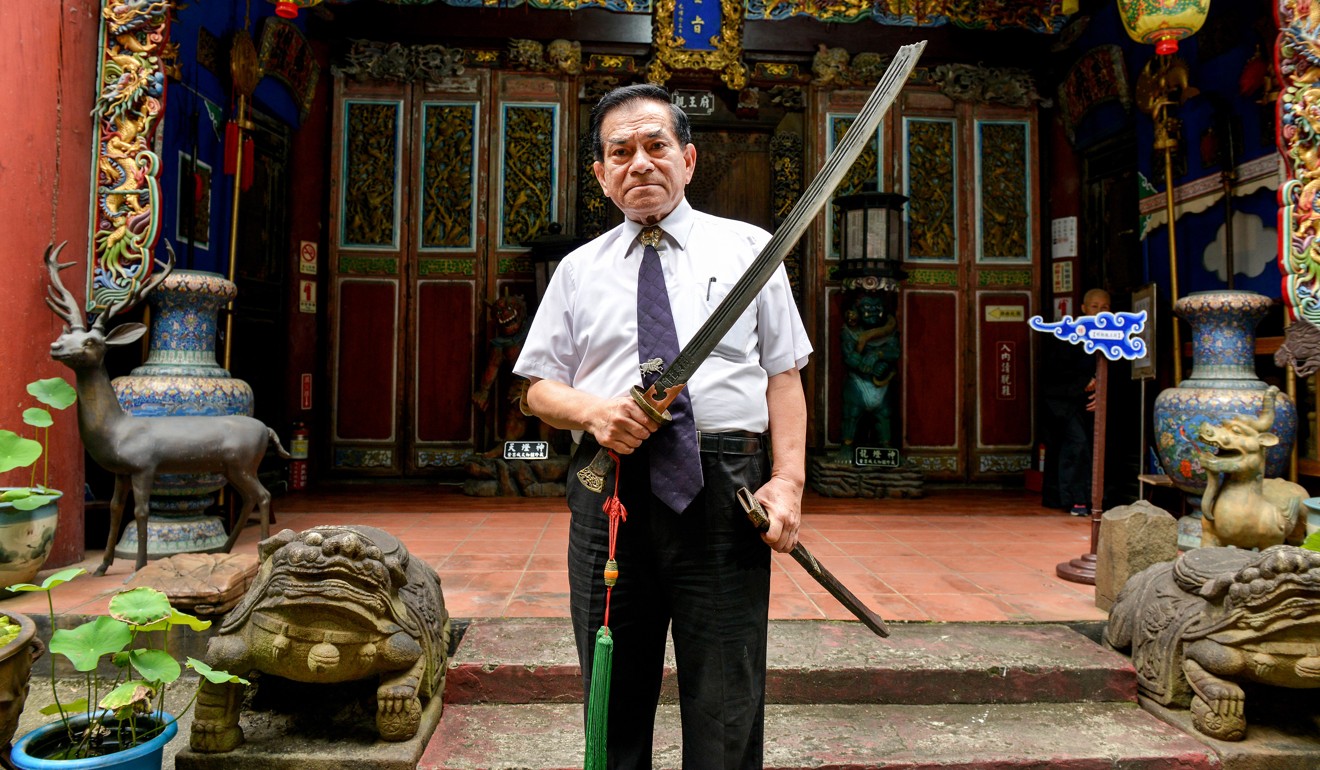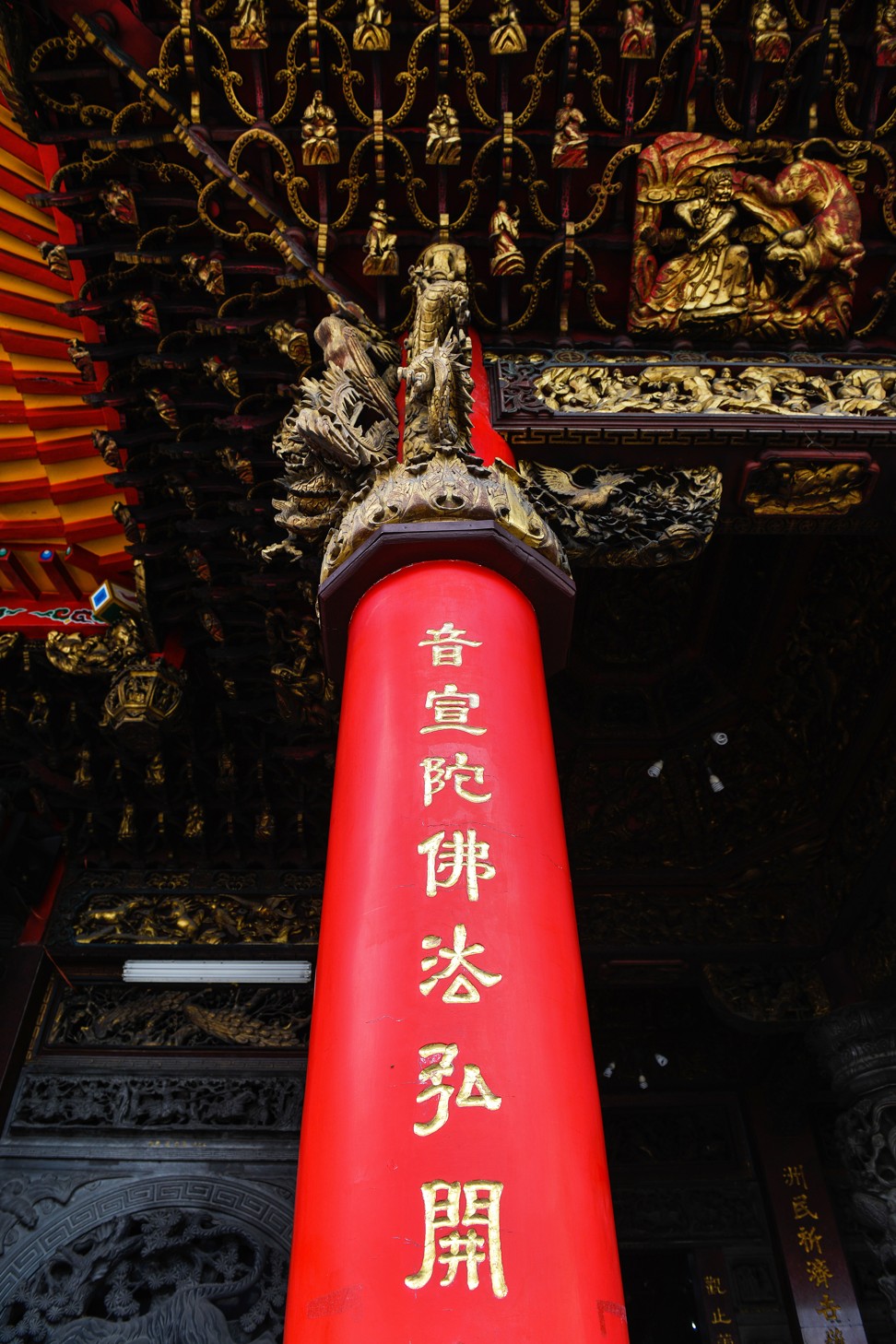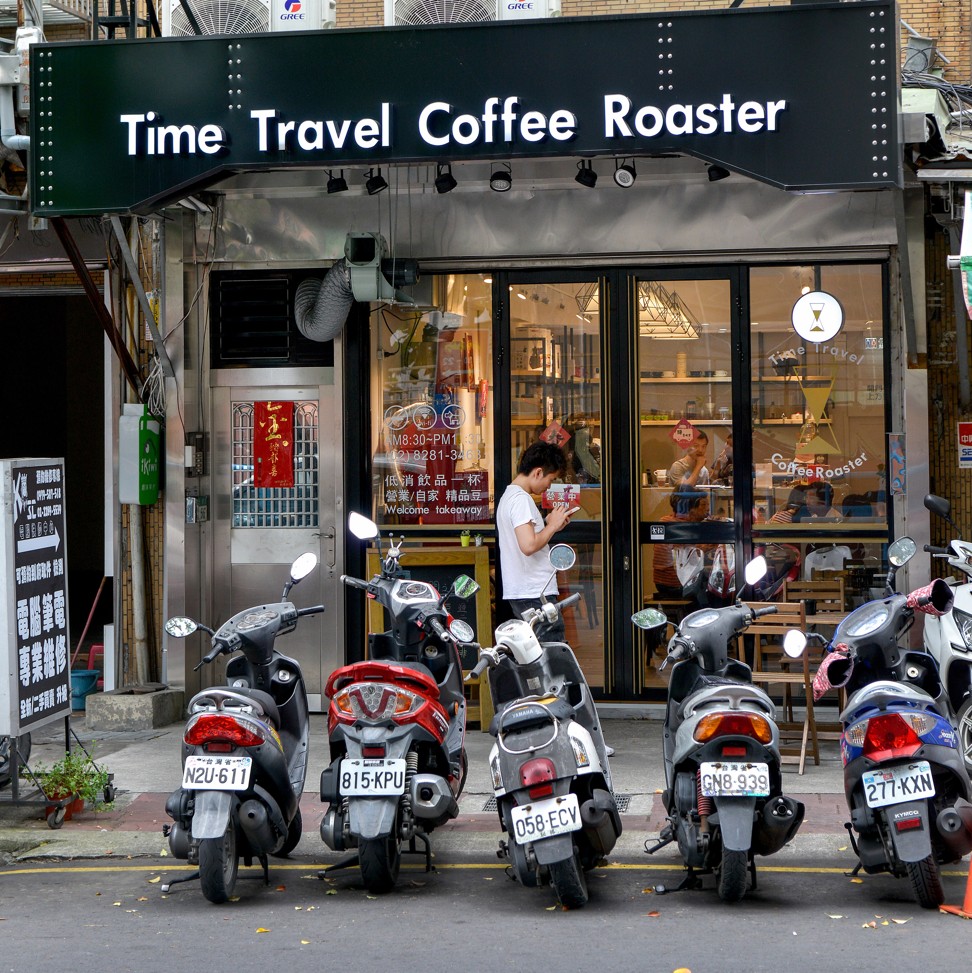
National Palace Museum in Taipei has a rival in Forbidden City Museum – the backpacker’s choice
- Little-known museum in suburban Luzhou houses more than 10,000 statues, screens, teapots, swords and warrior hats from Beijing’s imperial palace
- Its collection is a fraction the size of the palace museum’s, but that means visitors can get a personalised tour from its owner and curator

Taipei’s National Palace Museum feels as grand as its name. After scaling a broad column of steps, visitors line up for tickets. Old Chinese scrolls and lacquer ware, among the museum’s 690,000 relics, sit inside glass cases with their own expertly arranged lighting. Tour groups from all around Asia file through the air-conditioned galleries.
Then there’s the backpacker’s alternative.
It smells of structural decay in some places, and fans stand in for air conditioners. A parrot lives in a jungle-like yard guarded by stone lions. With just 100 visitors per day, volunteer guides can give everyone a customised tour.
This little-known suburban Taipei site called the Forbidden City Museum houses more than 10,000 statues, screens, teapots, swords and warrior hats from the Beijing imperial palace from which the museum’s name comes.

About 1,000 relics are displayed at any one time, the rest warehoused elsewhere in Taiwan. The museum’s 77-year-old owner-curator, Wang Liang-chuan, either bought them intact during the Cultural Revolution, a period from 1966 to 1976 when it was relatively easy to acquire them, or collected enough pieces to rebuild them. Some he sculpted himself according to Forbidden City specifications.
Wang’s museum got started thanks to his father, a native of Fujian province in mainland China and also a sculptor, who was initially opposed to opening the collection for public viewing.

As well as sculpture, Wang learned how to paint, use fabric, and even to carve statues from the polystyrene containers that littered roadsides. For decades their collection piled up at the family home in Luzhou, a suburb of Taipei that is now part of a megalopolis, New Taipei City. Wang opened the compound as a museum in 1998. Members of the public can visit the museum at weekends, while groups can reserve tours from Tuesday to Friday.
Wang spends as long as eight years restoring relics. “Artworks should all be passed on, and if you break that chain that is not good,” he says. “During the Cultural Revolution it was almost broken. [But] some were being sold in Taiwan, and the cycle wasn’t broken.”

“You’ve got a record of history and don’t want that to be confiscated by other people,” he adds. “Now people know the significance of Chinese culture.”
A visit starts with Buddhist stone sculptures in the yard and proceeds into a pair of exhibition halls.
The halls feature a Qing dynasty jade chariot and half-metre-high wooden sculptures of the eight immortals – spirits from China that turn into vessels and give life. One aisle specialises in weaponry, including a sword with grooves to help the blood flow out of a victim’s body.

A full-colour, floor-to-ceiling Qing dynasty wooden screen depicting dozens of 3D characters from the 16th century Chinese novel Journey to the West came to the museum in pieces as small as a swizzle stick.
The oldest relics are from 4,000 years ago, the most recent from the Qing dynasty that ended in 1911.
“When I first came in I said ‘Wow, so many treasures’,” says visitor Tsai Chin-mei, 56, a self-employed worker in New Taipei City. She enjoyed the personalised tour, since her knowledge of relics is at beginner’s level.

“The feeling you get walking in is comfortable, and when the curator has time he offers very attentive explanations of the relics,” she says.
Internet users often confuse Wang’s museum, recommended by tourism officials as a place to visit, with the government-run National Palace Museum, the curator says. The latter’s permanent collection makes it the largest institution of its type anywhere.
The relics in the National Palace Museum were taken to Taiwan by China’s Nationalist government in 1948 for safe keeping amid the civil war with the Communists. The original Forbidden City, the former imperial compound that is now a big tourist draw in Beijing, retains some relics.

Wang still lives on the site of his museum, and intends to keep the tree-shrouded site the way it is rather than selling to developers who are slowing buying up and redeveloping old houses nearby.
The museum in Luzhou draws visitors to a neighbourhood that is beginning to build its tourist appeal. A 10-minute walk away is the three-storey Yong Lian Temple, a religious centre for Buddhists and worshippers of local land gods.
Independently operated Time Travel Coffee Roaster, on Zhongxiao Road across the street from the No. 1 metro station exit, is an upmarket place to get a fresh brew before or after your visit.

A walk down Desheng Street outside the museum takes you past half a dozen places to eat lunch or dinner. One is the Luzhou Damiaokou noodle house, filled with elderly local diners. Oh Oh Yes, an upmarket hotpot spot, is across the street.
The Sanmin High School metro station connects the neighbourhood to central Taipei and helps brings tourists to the museum, including visitors from Europe. “They’re curious as to why there’s a Forbidden City museum here,” Wang says.
“The museum’s importance is in what it can pass on,” says Lee Wen-lin, executive officer of the Luzhou District government offices. “The sculptor is well-known since he’s passing down sculptures that spread spirituality or religion.”
The Forbidden City Museum, New Taipei City, Luzhou District, Desheng Street No. 30, costs NT$200 (HK$50) per adult entry. For group reservations call: +886 (0) 918 337 199